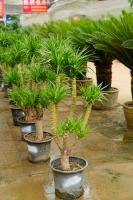Introduction
Hydroelectric power plants are a significant source of electricity worldwide, generating clean and renewable energy. Moving water is the primary driving force behind hydroelectric power plants, and it can be obtained through various means. This article will examine how moving water is obtained for hydroelectric power plants' use, discussing the different sources of water and the methods of harnessing it.
Dams
Dams are the most common source of moving water for hydroelectric power plants. They create a large body of water, such as a lake or reservoir, by blocking a river's flow with a barrier. When the water behind the dam is released, the potential energy created by the height difference between the water levels on both sides of the dam is converted into kinetic energy. The moving water then turns turbines, generating electricity. The amount of electricity generated depends on the size of the dam, the amount of water flowing through the turbines, and the height of the dam.
Run-of-the-River Power Plants
Run-of-the-river power plants are another way of utilizing the water flowing in a river to generate electricity. Unlike dams, they do not create a large body of water but instead divert a portion of the river's flow through turbines. As water flows through the turbines, it generates kinetic energy, which is converted into electricity. These plants typically have smaller-scale turbines, which means they produce less electricity than their dam counterparts. However, they have a lower environmental impact, as they do not significantly alter the river's natural flow and do not create a large reservoir.
Tidal Power
Tidal power is derived from the movement of the tides, caused by the gravitational pull of the moon and the sun. Tidal power plants can harness the kinetic energy created by the rise and fall of ocean tides to generate electricity. They work similarly to dams, using barriers to trap water at high tide and then releasing it through turbines as the tide recedes. Tidal power plants are limited to coastal areas with large tidal ranges and require significant upfront costs to build the necessary infrastructure. However, they offer a predictable and reliable source of energy as the tides follow a predictable pattern.
Conclusion
Moving water is obtained for hydroelectric power plants through various means, including dams, run-of-the-river power plants, and tidal power plants. These methods harness the kinetic energy of flowing water to generate electricity, providing a clean and renewable energy source. Governments and private companies worldwide are investing in hydroelectric power plants to reduce their carbon footprints and promote sustainable energy solutions.

 how many times do yo...
how many times do yo... how many planted tre...
how many planted tre... how many pine trees ...
how many pine trees ... how many pecan trees...
how many pecan trees... how many plants comp...
how many plants comp... how many plants can ...
how many plants can ... how many plants and ...
how many plants and ... how many pepper plan...
how many pepper plan...






























